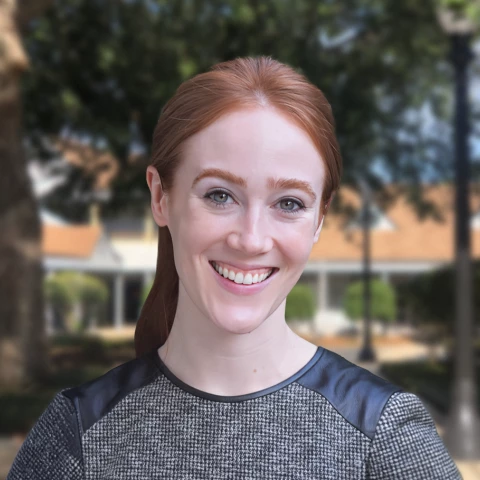In March 2025, UN Women—a United Nations agency that studies and tracks issues of gender equality around the world—indicated that in 2024, “almost one quarter of countries reported … backlash on gender equality.”i One proposed theory suggests that the pushback is a direct response to the progress itself, further fueled by factors such as social media and wealth inequality.ii While the UN Women report does emphasize the slow and steady trend toward progress over the past 30 years, it is that same plodding pace that can feel as frustrating as it is hopeful.
Against this troubling backdrop, however, it is critical to highlight promising gains, including those within the US legal field. Recent years have seen record numbers of women entering and advancing through the world of law. In 2016, women made up over half of law school students for the first time, and female enrollment only continues to increase. January 2024 marked another important milestone, with women becoming the majority among law firm associates. Although only about 41% of all lawyers are currently women, the American Bar Association expects that this percentage will shift relative to these enrollment and associate statistics—that is, starting with law school and trickling into associate-level employment and beyond.iii
Of course, it will likely take considerable time before “higher echelon” roles reflect these more recent gains. Progress has been significantly slower along the higher rungs of the career ladder, which have been characterized by substantially flatter (or stubbornly static) growth patterns. To wit, 20% of law firm partners in 2013 were female—a proportion that had increased only slightly in the decade that followed, reaching 28% in 2023.iv
Stagnation at the partner level notwithstanding, the bottom line remains promising: women are entering the field of law at historic rates. With more female trial lawyers facing more judges and juries, it has become increasingly critical to examine the role that an attorney’s gender might play in case outcomes—including the findings of a new IMS Legal Strategies study of how jurors perceive female attorneys.
A New Study on Attorney Gender Effects
When it comes to how attorney gender might affect case outcomes, prior research has been patchy, and its results have been mixed. A 2013 study published in the Journal of Women, Politics & Policy found that female attorneys achieved better case results among appellate court judges,v while a 2018 study in Law and Human Behavior found that participants deemed male attorneys who displayed anger significantly more effective than female attorneys doing the same.vi Further muddying the waters, a 2007 study published in The University of Chicago Law Review found no correlation at all between gender and case success.vii Some researchers have assessed the scattered assortment of findings and surmised that the lack of clear consensus points to an absence of “universal bias against a specific gender,” as suggested by Tyler Livingston, Peter Rerick, and Monica Miller in their chapter on the topic in Advances in Psychology and Law.viii
But a reluctance to draw any firm conclusions is not unwarranted. The considerations and circumstances at play are highly complex and variable. For instance, research—including a 2010 study in Politics & Gender—has indicated that the type of case being tried (such as cases perceived as involving “women’s issues”) can have an influence on whether attorney gender matters.ix Yet, some studies focus on judges as an audience, others on jurors. Many also have examined criminal cases, making it difficult to extrapolate their findings to civil litigation. In short, empirical research on the subject of attorney gender has historically raised more questions than it has provided answers.
Study Overview
To address some of these questions and expand on the existing data, we conducted a study seeking further insight into how attorney gender might play a role in perceptions and outcomes—specifically, in a common, high-stakes civil case type: toxic tort.
Last year, a national sample of 199 jury-eligible participants viewed a pre-recorded video of a mock opening statement from either a male or female plaintiff attorney, followed by mock testimony from a male or female science expert,x and ending with a mock rebuttal from a female defense attorney. To control for possible effects of race and age, all actors were Caucasian and in the same general age category (50–65). Each iteration of the video used the same script and was performed by a litigation consultant or trial attorney playing the given role. Presentations and follow-up questions concerned a fictional toxic tort dubbed “Smith et al. v. SaniMed, Inc.,” wherein an ethylene oxide (EtO) sterilization plant was accused of releasing EtO into the environment, which allegedly caused various cancers in residents of a nearby fictional neighborhood. The fictional defendant, SaniMed, denied that there were any problems with its plant or machinery, that it released harmful amounts of EtO, or that its facility caused any of the plaintiffs’ cancers.
The 199 respondents were placed into one of four experimental groups. The gender of both the plaintiff attorney and the science expert was manipulated, creating four possible attorney/expert combinations: male attorney/male expert, male attorney/female expert, female attorney/male expert, and female attorney/female expert. The defense attorney’s gender (female) was held constant across all four experimental groups.
After viewing each of the videos, participants provided their case “leaning” (an indication of the extent to which they favored a given side at that moment),xi attorney ratings, likelihood to hire the attorney, and words to describe the attorney. At the end, they also responded to several broader attitudes-based questions, including whether there should be more gender diversity in the courts.
Once data collection was completed, a neutral coder (blind to the participants’ experimental condition) assessed and categorized the words and phrases respondents used to describe the attorneys as “positive,” “negative,” or “neutral.”
Given the demonstrated effects of “safetyism” on jurors’ verdict outcomes,xii,xiii respondents also completed a supplemental safetyism survey, which measured their risk aversion and emotional thinking habits. Safetyism reflects the theorized result of decades of shifting trends in how jurors perceive issues of risk, safety, and corporate responsibility. For instance, a safetyist is much more likely to believe that a company should ensure its products are 100% safe, 100% of the time, signaling extreme risk aversion.
Results: Attitudes and Attorney Perceptions
Upon analysis of the data, two key findings emerged: 1) male and female respondents differed significantly on the desire for courtroom gender diversity measure, and 2) the male and female plaintiff attorney received markedly different qualitative feedback from respondents of both genders.
First, respondents’ overall views on gender in the courtroom were not altogether unexpected. When controlling for plaintiff attorney and expert witness gender, women demonstrated statistically significantly greater interest in promoting courtroom gender diversity; 67% of women disagreed or strongly disagreed that “the legal system is just fine the way it is, without trying to diversify based on gender,” compared to 53% of men. The pattern was sufficiently resilient that it emerged even when the question was rephrased, with 60% of women and 48% of men agreeing or strongly agreeing with the more active framing that “there needs to be more gender diversity in our courts.”
The more interesting finding, however, emerged upon examination of the male participants alone: men who viewed the male plaintiff attorney were significantly more likely to agree with the statement “there needs to be more gender diversity in our courts” than were men who viewed the female plaintiff attorney. Namely, only 31% of men who saw the female plaintiff attorney agreed there should be more gender diversity, while 68% of men who saw the male plaintiff attorney endorsed the same sentiment.
“There needs to be more gender diversity in our courts.”
Importantly, this effect did not occur among female participants; women tended to express a desire for more gender diversity regardless of which experimental group they were in. One potential explanation for this gender differential is that seeing a female attorney sent a message to male participants that things have indeed changed and that the current diversity situation in courtrooms is adequate. Meanwhile, men who saw a male plaintiff attorney may have begun to question whether that was the status quo and consequently were more amenable to the idea that there is some need for change. Women, on the other hand, may be more likely to have a firsthand understanding of the progress that has yet to be made in terms of gender parity in most professions—including law.
Regardless, we also found that the female plaintiff attorney garnered more positive feedback from respondents. While negative reviews were rare for both attorneys, with no significant difference between the two, the female attorney garnered significantly more positive words and phrases to describe her performance, while the male attorney was described in significantly more neutral terms. One possible reason to explain this is that – perhaps due to pre-existing gender stereotypes – seeing a presentation by a male attorney was an expected norm, but the female attorney countered those expectations with positive results.
Results: Case Leanings
Our other key findings offered a different surprise. Respondents demonstrated no increased willingness to favor either side’s case based on the gender of the attorney presenting the plaintiff’s opening. We also reviewed their final case leanings to assess whether a difference in their experimental group assignment would affect their reaction to the defense rebuttal presentation by a female attorney, and once again, no significant effects emerged. In fact, respondents were equally likely to sway to the defense regardless of the plaintiff attorney’s gender.
So, if attorney gender did not have a demonstrable effect on respondents’ initial case leanings or whether they were swayed by the defense rebuttal presentation, what might explain those respondents who supported the plaintiffs from beginning to end? A statistical review of the data did not find a significant link between attorney gender, respondent gender, political beliefs, or education level to explain why some participants were swayed to the defense side, while others did not budge. Upon further analysis, however, one factor did appear to affect the durability of respondents’ views: their safetyism ranking.
Past IMS research into this issue has revealed a significant verdict influence, with safetyists being much more likely to favor plaintiffs in cases such as personal injury, toxic tort, and products liability.xiv
In this study, participants’ answers were assessed along a safetyism scale.xv Those with high safetyism scores tend to rely on their intuition over facts and show high risk aversion—and it was this contingent of participants who were significantly more likely to favor the plaintiffs’ case in the end. Specifically, on average, those low on safetyism were significantly more likely to shift toward the defense case upon hearing the defense rebuttal—even if they had greatly supported the plaintiffs’ case prior; those with high safetyism scores instead demonstrated little shift, beginning with strong plaintiff support and ending much the same.
Safetyism, not gender, also directly affected their views of the defense attorney arguing on behalf of the defendant company. High safetyists were significantly more likely to view the defense attorney as less effective, less believable, less sincere, less trustworthy, less likable, and even less knowledgeable.
Conclusion
Although the backlash against increased equality and opportunities for women remains a cause for considerable concern, it appears that American jurors consistently expect to see, and respond favorably to, female attorneys. While we would never dare posit that implicit gender biases and expectations have evaporated—jurors are still very much attuned to perceived differences—our preliminary findings help support the conclusion that there is little in the way of a clear, universal bias against attorneys of a given gender such that it affects case outcomes. Over decades, women have made strides not only in the frequency with which they appear as attorneys in court, but also in jurors’ perceptions of them as equally competent and effective advocates.
As we often find, demographics alone rarely offer a nuanced explanation of juror decision-making; rather, it is much more often a result of their relevant attitudes and experiences. Although jurors of different genders had somewhat differing views on the importance of increasing attorney gender diversity, our study results suggest that it was jurors’ perceptions of risk, not attorney gender, that affected their views in the presented case—a finding that should promote confidence in aspiring female lawyers and the law firms that hire them.
This article was originally published by Law360; republished with permission.
References
i Women’s Rights in Review 30 Years After Beijing. (2025). UN-Women. https://www.unwomen.org/sites/default/files/2025-03/womens-rights-in-review-30-years-after-beijing-en.pdf
ii Specific additional factors include weakening democratic institutions, rising inequalities in wealth and opportunity that encourage the scapegoating of the marginalized, and social-media’s ability to widely spread antiquated views about gender roles. Lennon, C. (2025, March 7). Online “manosphere” is moving misogyny to the mainstream. UN News. https://news.un.org/en/story/2025/03/1160876
iii Women in the Legal Profession. (2024). Americanbar.org; American Bar Association. https://www.americanbar.org/news/profile-legal-profession/women/
iv Ibid.
v Szmer, J. J., Kaheny, E. B., Sarver, T., & DeCamillis, M. (2013). The impact of attorney gender on decision making in the United States Courts of Appeals. Journal of Women, Politics & Policy, 34, 72–100. https://doi.org/10.1080/1554477X.2013.747898
vi Salerno, J. M., Phalen, H. J., Reyes, R. N., & Schweitzer, N. J. (2018). Closing with emotion: The differential impact of male versus female attorneys expressing anger in court. Law and Human Behavior, 42, 385–401. https://doi.org/10.1037/lhb0000292
vii Abrams, D. S., & Yoon, A. H. (2007). The luck of the draw: Using random case assignment to investigate attorney ability. The University of Chicago Law Review, 74, 1145–1177. https://doi.org/10.2307/20141859
viii Livingston, Tyler N., Rerick, Peter O., & Miller, Monica K. (2019). Psychological Explanations of How Gender Relates to Perceptions and Outcomes at Trial. In Bornstein, B. H., & Miller, M. K. (Eds.), Advances in psychology and law (Vol. 4, pp. 144). Springer.
ix Szmer, J. J., Sarver, T. A., & Kaheny, E. B. (2010). Have we come a long way, baby? The influence of attorney gender on Supreme Court decision making. Politics & Gender, 6. https://doi.org/10.1017/s1743923x09990493
x While this article touches on the expert witness element as relevant to certain findings, prior research and our study results regarding jurors’ views of expert witness gender are beyond the scope of this article.
xi These leanings also provided a means to assess and account for “presenter effects,” allowing us to separate presenters’ other qualities from the potential gender effects we sought to test.
xii Leibold, Jill M. & Polavin, Nick. (2023). The Rise of ‘Safetyism’ Has Entered the Courtroom. Law360. https://www.law360.com/articles/1603502/the-rise-of-safetyism-has-entered-the-courtroom
xiii Leibold, Jill M. & Polavin, Nick (2023). A Strange New Litigation World: Safetyism, Plaintiff Verdicts, and High Damages. For the Defense (September), 41-44. https://digitaleditions.walsworth.com/publication/?i=803071&p=42
xiv Ibid.
xv Developed by IMS jury consultants








